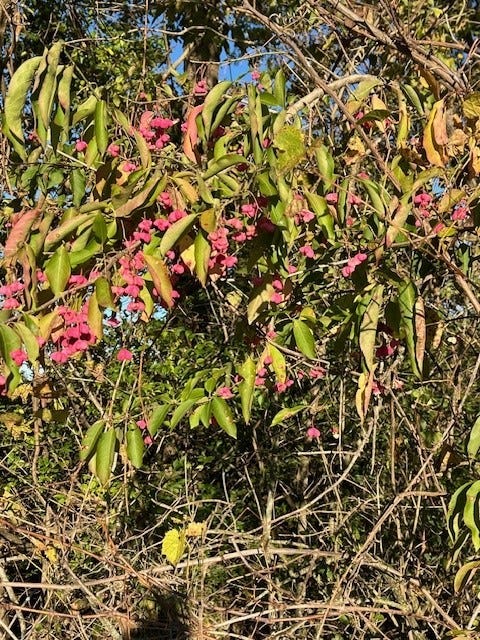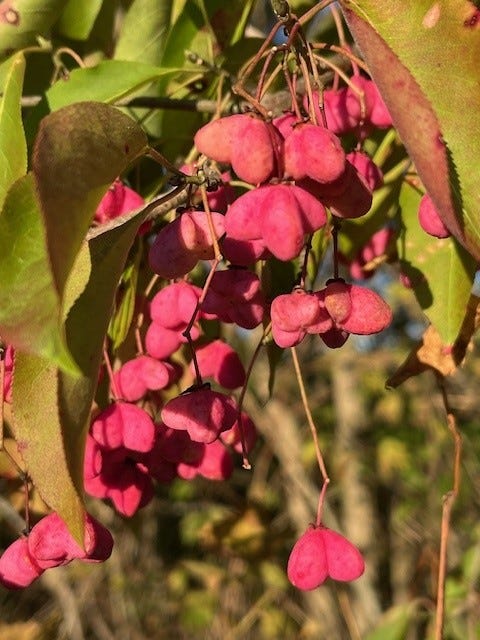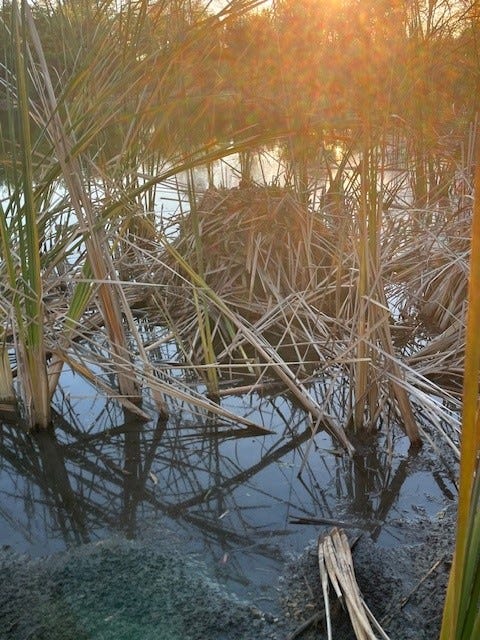Rewilding This Land
This land we have lived on for around 2 decades was farmland for 100 years before we came here. The land was tilled frequently, sprayed with chemicals, farmed, and harvested, on repeat every year. In order to be farmed, here on the west side of Central Ohio, huge tiles (pipes) were dug into the ground and drained the water that was native to the land into the nearest stream that carried the water eventually to the Big Darby Creek (a river really, and one of the cleanest ones in Ohio). The land formerly was, and sincerely wants to be, wetland, probably wet forest.
When I first moved to this land, Kevin was still growing organic food for local farmers markets, and the gardens around the house were somewhat native but needed some loving care. There were several patches of native prairies that Kevin had planted a few years before I got there, and to this day I am amazed that he did that before we knew how important the native plants and grasses are to our many companions on this land.
My first year here I went to a course offered through one of my favorite groups in the world, the Arc of Appalachia, where I learned about 50 native trees and shrubs that live in Ohio, and the sort of terrain they prefer. When our teacher, Nancy Stranahan, named trees and shrubs that could (and should) be used in home landscaping I took note, and then planted them on the farm. They are mostly thriving still and are a delight to live with—for me and the beings that need them for food and shelter.
One of the native shrubs I planted by the house is the Eastern Wahoo, a great name for anything in my opinion. That this is an easy growing shrub with bright red berries that pop open with a snapping sound in the fall to better spread their seeds, is just a bonus.
At the end of August, Kevin and I were taking some folks around our farm to show them native trees, and as we walked along a familiar shady path on one side of the farm, I screamed out in surprise and joy. It was the time of year that the Wahoo berries are really bright red, and there they were in a place totally unexpected, and not planted by us. It must have been there unseen by us for a while, but those seeds are unmistakable this time of the year. The birds, or maybe some other critters, dropped the seeds and the Eastern Wahoo found its perfect spot to thrive. This Wahoo was taller than the one by the house and looked really happy to be spreading out. I was jumping for joy to see this rewilding happening all on its own.
And yet not on its own, really. It was happening because the web of life that is here on this land is re-generative now. The beings on this land, that are welcomed here now, are doing what they do: eating and pooping, reproducing, and moving around. And these completely natural actions on their part are now helping to rewild this land, more than we ever could.
How are they welcomed now more than before? We have planted, on purpose, native plants they like to eat, to reproduce in, and to hide in. We have offered clean moving water, especially important in this time of drought. We have consciously made space for them, and in our hearts we have loved them. My excitement at seeing this Wahoo (and a week later another one on the other side of the farm YAY!) comes right from my heart. As much as possible, I connect with each living being I see by being glad to see it on the land. I thank them for enriching the landscape, even as they are enjoying it. And the re-wilding continues….
Bonus excitement and picture: And speaking of rewilding…..we have had muskrats in the pond here for several years but to our knowledge they have never built a lodge before. We just saw this a few days ago and once again are jumping for joy!







An Eastern wahoo is new to me thanks.
It is beautiful that you are doing this for the land.